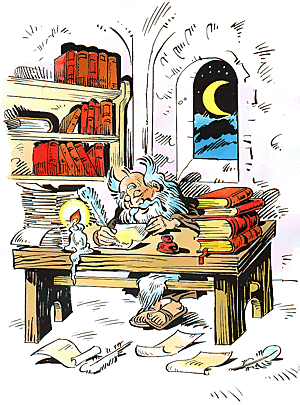scrib-, script-, -scribe, -scription, -scriptive
(Latin: write, record)
Writing has not always been available for the "common person" to utilize. In the past it was restricted only to the few who were educated especially for that purpose either as scribes or monks who dedicated their lives to this vocation. You can learn more about the ancient Egyptian scribes by clicking on the link at the bottom of this page.
A superscript is a number, figure, or symbol that appears above the normal line of type, at the right or left of another symbol or text.
Superscripts are often used, with various meanings, in formulas, mathematical expressions, or descriptions of chemical compounds and isotopes.
Superscripts can also be used to indicate the presence of a footnote in a document. Some people even submit ordinal endings for numbers which are written as superscripts; such as, 1st, 2nd, 3rd, 4th, etc.; instead of, 1st, 2nd, 3rd, 4th.
2. To write out in other characters, to transliterate; to write out (a shorthand account) in ordinary “long-hand”; formerly also, to translate or render accurately in another language.
3. In music, to adapt (a composition) for a voice or instrument other than that for which it was originally written.
4. In broadcasting, to record for subsequent reproduction; to broadcast in this form.
5. To transfer information from one way of storing it on one computer to another, or from a computer to an external storage device.
2. Anything copied from an original, previously written, copy.
2. An official document showing the educational work of a student in a school or college; any copy or record.
2. A phonetic representation of speech using special symbols.
Also translated as: "Spoken words fly through the air, but written words endure" or "Get it down on paper."

 There is a special presentation about the history of the ancient scribes at this "Professional-Egyptian scribe story", Part 1.
There is a special presentation about the history of the ancient scribes at this "Professional-Egyptian scribe story", Part 1.

